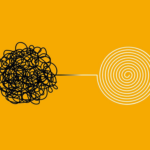
Bridging the Gap: A look at ICT and cyber security in Indigenous Communities
As part of NAIDOC Week 2021, we are taking a closer look at Aboriginal and Torres Strait Islander participation in the field of IT and cyber security. This blog not only explores issues of cyber safety in remote communities and under representation in the sector, but further highlights Aboriginal leaders doing amazing things for the industry and their community.
The Indigital Revolution
‘These unwired devices are having an immediate impact on the way that Indigenous Australians of all ages and backgrounds are accessing the internet; staying in touch whether locally or over vast distances; creating, finding and sharing ideas and media; and determining for themselves how they and their communities are represented via the internet and in the greater world.’ [1]
He notes that this ‘rapid nationwide uptake of [IT] among Indigenous Australians [used to be] unthinkable… particularly among those living in remote communities.’ [2] Corn deemed this ‘the Indigital revolution.’
IT access issues mirror economic and social development issues for Indigenous Peoples
Firstly, it’s important to note that while information technologies have permeated into nearly every community, dominating our everyday lives and facilitating our interconnected world, there still remain heightened access issues for a lot of Indigenous peoples. Mikaela Jade, a Cabrogal woman and CEO and Founder of Indigenous edu-tech company, Indigital, notes: ‘ As Aboriginal peoples we’re usually the last people to receive cutting edge technologies.’ [3] So, while the ‘Indigital revolution’ describes a rapid uptake of technology among First Nations peoples, it is still relative to the conditions of their remote communities.
Secondly, use and access to information and communications technologies (ICTs) in remote communities is inherently different to those in urban spaces. To elaborate, we’ll draw on Indigenous spokesperson Marcia Langton, who suggests that low access to ICTs – namely computers – ‘reflects the proportionally high costs for individuals on relatively low incomes.’ [4] This correlates with the findings from Telstra’s ‘Cyber Safety in Remote Aboriginal Communities and Towns’ Report, stating that internet access is predominantly mobile-only for Aboriginal people living in the Northern Territory. [5]
Emerging cyber safety issues among remote Indigenous Communities
Telstra’s research revealed several unique cyber safety problems affecting remote-living Indigenous communities. These issues revolve primarily around mobile phone practices, social media use and breaches of privacy.
According to the report, there is a high-level of device sharing, with instances of mobile devices being shared without owner permission. This is particularly worrying when you factor in that many people are not using and are unaware of how to set passcodes and passwords for their devices. For example, this has led to hacking of social media accounts and the creation of fake profiles. Further to that, mobile phones are some of the primary means of accessing essential online services like internet banking and e-Government websites. As a result, this poses a privacy risk to social media accounts and has greater implications in terms of financial security and management.
Telstra found that prepaid is the preferred mobile broadband plan type. As a result of device sharing and a lack of passcodes, this had led to ‘credit bullying’ or ‘credit theft,’ where people – typically family members – transfer credit from others’ accounts. Women surveyed for the report portrayed this as a particularly distressing issue, ‘especially on un-passcoded phones’. [6] In short, managing access to phones and accounts is often complicated by family relationships and can evidently lead to breaches of privacy as well as financial disputes.
What are the wider implications of these mobile-only practices?
For other segments of the Australian population, mobile phones are just one of a myriad of devices used to connect to the internet. For most, they are a minor part of the ICT patchwork, but for some First Nations communities, they are the sole means of connecting to the world wide web. This disparate lack of access has considerable societal implications. It not only reflects the disproportionate cost of these devices in comparison to the average person’s income in remote Indigenous communities but presents a ‘serious barrier to successful engagement in the creative and digital economy.’ [7] In other words, this can be deemed a form of digital exclusion.
What is Digital Exclusion?
According to Iriss.org.uk, digital exclusion can be broadly defined as ‘where a section of the population have continuing unequal access and capacity to use Information and Communications Technologies (ICT) that are essential to fully participate in society.’ [8]
Let’s face it, ICT devices are increasingly central to the way we define and present ourselves. They help us to access necessary banking, government, school and healthcare services. Access and use of digital devices and the internet are also the key to accessing community. They facilitate constant communication between family, friends and the wider world. Furthermore, they are the key to accessing online platforms for cultural, political and socio-economic discourse. Essentially, the impacts of this digital exclusion extend far beyond mere hindered internet access. To clarify, they affect Indigenous social capital, engagement and connectivity.
The road leads back to representation
‘Lots of Indigenous students gravitate towards healthcare and law because it’s pretty obvious what the impact is. You train to be a nurse and you can go into community and help people, help blackfellas in general … how tech helps community is less obvious.’ [9]
“For people who live in remote areas, it might be access to education, mobile phones, computers, proper internet … [and] within an urban setting it might be similar to my barriers, which was that there were not a lot of Indigenous people in the IT industry, pathways aren’t clear for them, and they’re not encouraged to pursue it.” [10]
Here, we can see the detrimental flipside of a ‘for us, by us’ mentality – where Indigenous people see IT and cyber as a distant, elusive or alien realm separate to their community. The pathways, Devow notes, are clouded with ambiguity.
What, then, is a stepping-stone towards assuaging these issues and increasing Indigenous participation and interest in the industry? Let’s turn to the Indigenous leaders within the sector and look at the amazing things they are doing to uplift First Nations peoples’ participation:
Spotlighting Indigenous Excellence
Dion Devow – CEO and Managing Director of Indigenous ICT Company, Yerra
Amongst many other titles, Dion Devow is an Indigenous engagement specialist for the ASPI’s International Cyber Policy Centre. In 2017 he was named the ACT NAIDOC Person of the Year, and in 2018 he was awarded the ACT Australian of the Year.
While he graduated with a Bachelor of Applied Science in Health Education in 1997, Devow has gone onto become one of the most prominent Indigenous figures in Business and ICT services. With strengths in community development, Devow is always working to bridge the gap between IT and Indigenous Australians. His work at Yerra and ASPI are both in service of encouraging young Indigenous Australians to pursue a career in ICT.
Learn more about Dion here.
Mikaela Jade – CEO and Founder of Indigenous Edu-tech company, Indigital
Mikaela Jade is a Cabrogal woman from the Dharug-speaking Nations of Sydney. She is also a United Nations Permanent Forum Indigenous Issues delegate, Tribal Link Alumni member (New York), Entrepreneur in Residence at the University of Wollongong and Fellow of the Australian Rural Leadership Program.
Her 5-time award winning company, Indigital, is the world’s first Indigenous augmented and mixed-reality company bringing cultural sites alive by merging drones, 4D mapping software and image recognition with cultural law. This is particularly pertinent considering the theme of NAIDOC Week 2021: Heal Country! Heal Country is a call for greater protections of lands, waters, sacred sites and cultural heritage. It’s a time to explore, embrace and reflect on First Nations Peoples’ cultural knowledge and deep understanding of country.
Mikaela also launched ‘Indigital Schools’ which ‘enables Indigenous and non-Indigenous kids to connect with and learn from Indigenous Elders about cultural knowledge, history and language, all while learning digital skills in cutting-edge technologies like augmented reality, animation, audio recording and coding.’ [11]
Learn more about Mikaela and Indigital here.
Kieran Hynes – Founder and Managing Director of Willyama Indigenous ICT Services
Kieran Hynes is a Woromi man from the Willyama region at Broken Hill. His business, Willyama Services, not only assists customers with ICT needs, but works to close the gap between Indigenous Australians and the IT sector.
The Willyama training program is targeted at young Indigenous people, hoping to get them interested in IT and increasing participation rates for STEM courses. School children are paired with Indigenous mentors who guide them throughout the program and in some instances, into successful careers in IT.
As Hynes notes, ‘it’s not just about building skills. It’s also making sure Indigenous students have access to proper IT equipment and bandwidth in the first place, particularly those living in remote and rural parts of Australia.’
Learn more about Kieran and Willyama here.
References
[1] Corn, A. “Introduction: the Indigital revolution.” In Information technology and Indigenous communities. AIATSIS Research Publications, 2013: 2.
[2] Ibid: 2.
[3]Barbaschow, A., 2021. Indigital using augmented reality for traditional storytelling
[Accessed 8 July 2021].
[4] Langton, Marcia. “Foreword.” In Information technology and Indigenous communities. AIATSIS Research Publications, 2013: 2.
[5] Telstra, Cyber Safety in Remote Aboriginal Communities and Towns, October 2016: 3.
[6] Ibid: 3.
[7] ITIC Statement In Information technology and Indigenous communities. AIATSIS Research Publications, 2013: xi.
[8] Saunders, R. Digital inclusion, exclusion and participation. 9 April 2020. Accessed 8 July 2021.
[9] Curtis, H., Devow, D., Nkwanyana, K. and Page, M. How to bring Indigenous expertise and experience into Defence and the digital economy. 2 June 2021. Accessed 8 July 2021.
[10] Chanthadavong, A. Dion Devow’s mission to help bridge the gap between Indigenous Australians and IT. 22 June 2020. Accessed 8 July 2021.
[11] Indigital, Where Cultural Knowledge Connects with Digital Skills.
For more information please contact our cybersecurity professionals today.
Recent news
Latest posts
Key Strategies and Best Practices for Enhancing OT Security
05 April, 2024A Comprehensive Guide to Third Party Risk Management (TPRM)
26 February, 2024









